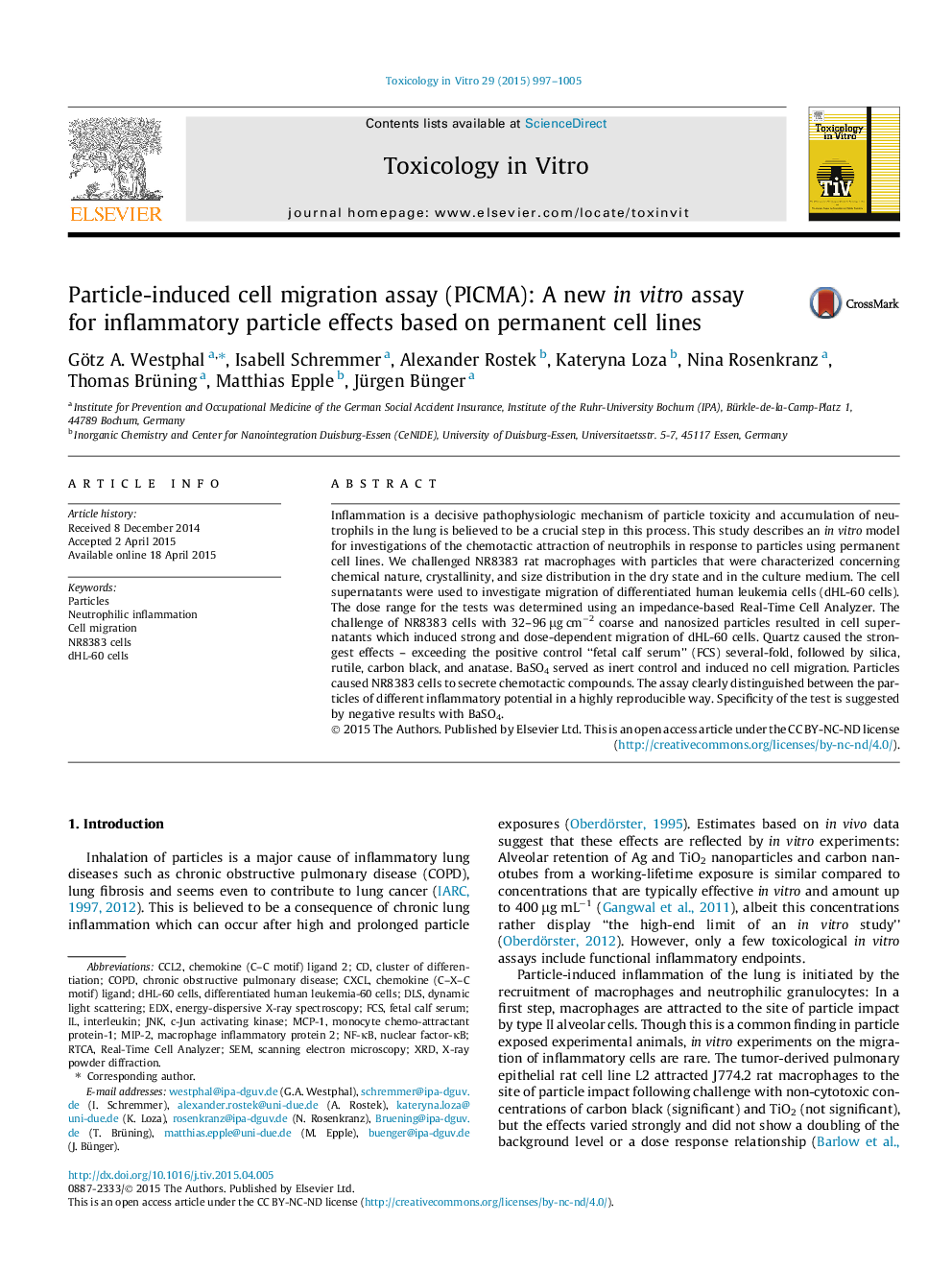| Article ID | Journal | Published Year | Pages | File Type |
|---|---|---|---|---|
| 5861680 | Toxicology in Vitro | 2015 | 9 Pages |
â¢In vitro model for particle induced neutrophilic lung inflammation.â¢The assay can differentiate between inflammatory and inert particles.â¢The test is easy to handle and avoids the use of primary cells.
Inflammation is a decisive pathophysiologic mechanism of particle toxicity and accumulation of neutrophils in the lung is believed to be a crucial step in this process. This study describes an in vitro model for investigations of the chemotactic attraction of neutrophils in response to particles using permanent cell lines. We challenged NR8383 rat macrophages with particles that were characterized concerning chemical nature, crystallinity, and size distribution in the dry state and in the culture medium. The cell supernatants were used to investigate migration of differentiated human leukemia cells (dHL-60 cells). The dose range for the tests was determined using an impedance-based Real-Time Cell Analyzer. The challenge of NR8383 cells with 32-96 μg cmâ2 coarse and nanosized particles resulted in cell supernatants which induced strong and dose-dependent migration of dHL-60 cells. Quartz caused the strongest effects - exceeding the positive control “fetal calf serum” (FCS) several-fold, followed by silica, rutile, carbon black, and anatase. BaSO4 served as inert control and induced no cell migration. Particles caused NR8383 cells to secrete chemotactic compounds. The assay clearly distinguished between the particles of different inflammatory potential in a highly reproducible way. Specificity of the test is suggested by negative results with BaSO4.
